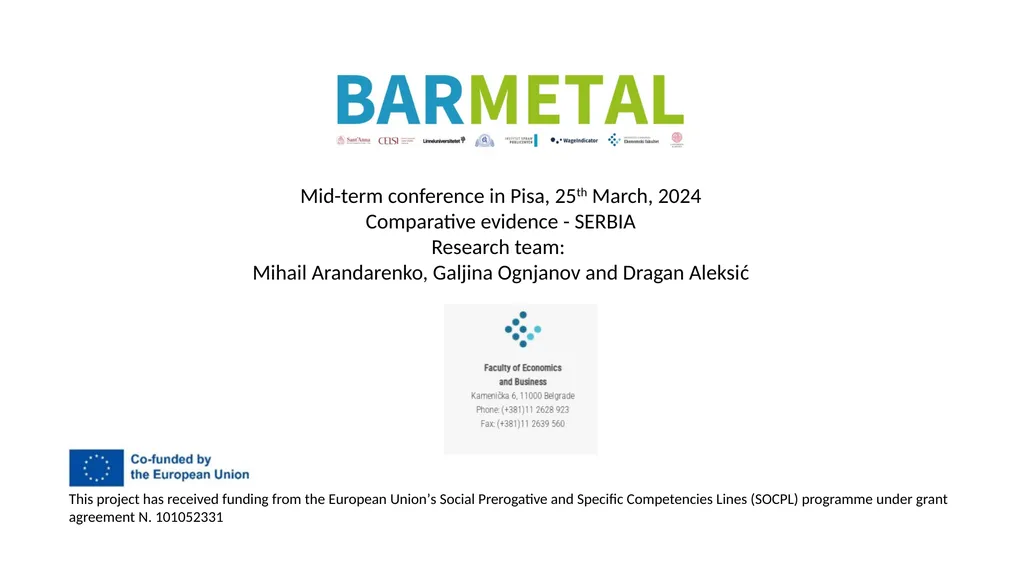
Mid-term conference in Pisa, 25th March, 2024
Author: tatyana-admore | Published: 2025-05-28
Description: Mid-term conference in Pisa, 25th March, 2024 Comparative evidence - SERBIA Research team: Mihail Arandarenko, Galjina Ognjanov and Dragan Aleksić This project has received funding from the European Unionʼs Social Prerogative and Specific
Download Presentation
Download the PPT/PDF: Download
Transcript:
Loading transcript�